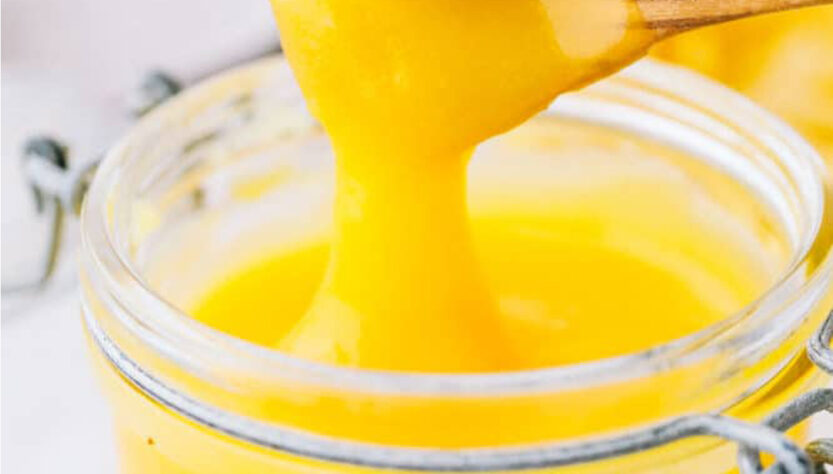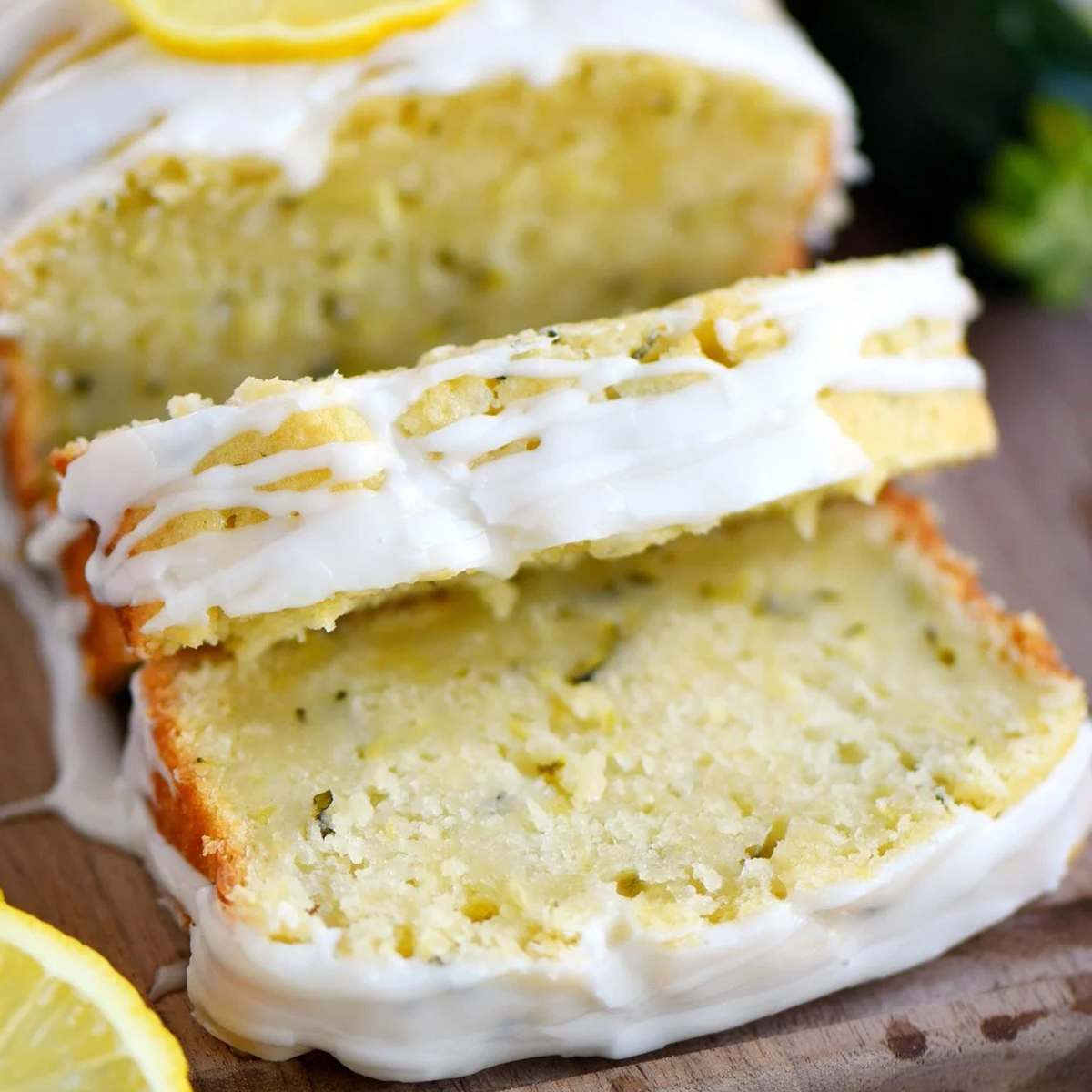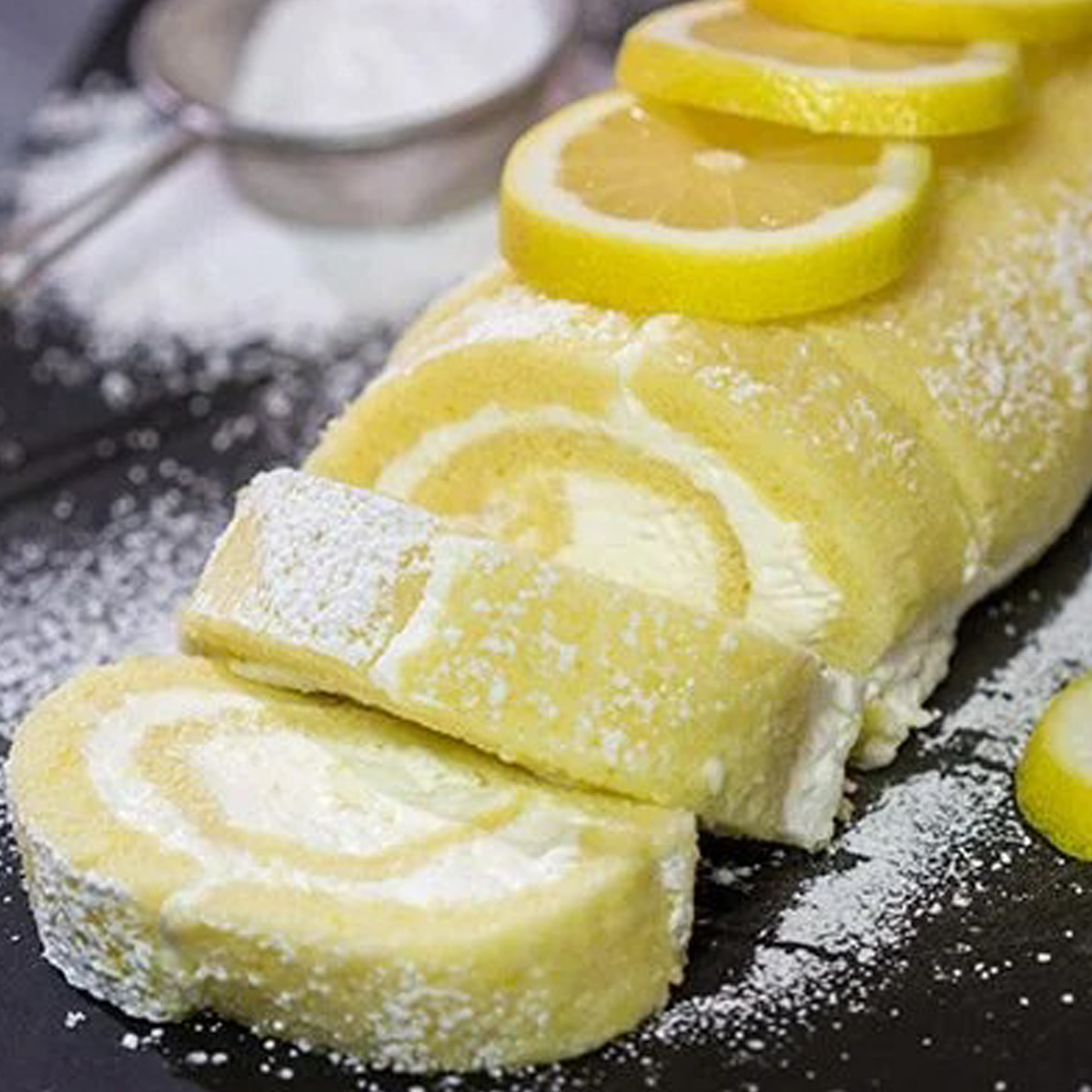Lemon curd is a delightful and zesty citrus spread that adds a burst of sunshine to your culinary creations. This bright and tangy delicacy is a timeless favorite, cherished for its vibrant flavor and versatility in the kitchen. With its rich, creamy texture and a perfect balance of sweet and tart, lemon curd can elevate a wide range of dishes, from breakfast pastries to desserts. In this introduction, we’ll explore what lemon curd is, its key ingredients, and why it’s loved by food enthusiasts around the world.

What Is Lemon Curd?
Lemon curd is a sweet and tangy citrus spread or sauce made from simple ingredients, primarily lemons, sugar, butter, and eggs. The process of making lemon curd involves cooking these ingredients together until they thicken into a smooth, velvety, and intensely flavored mixture.
Key characteristics of lemon curd include its bright lemony flavor, vibrant yellow color, and a luxurious, custard-like consistency. It has a delightful balance of sweet and tart, making it a versatile addition to a wide range of dishes. Lemon curd is often used as a filling for cakes, pies, tarts, and pastries, or as a topping for scones, pancakes, waffles, and yogurt. Its refreshing and zesty profile also makes it a popular ingredient in desserts, sauces, and spreads, adding a burst of citrusy goodness to various culinary creations.

Why You Will Love Lemon Curd Recipe?
- Vibrant Lemon Flavor: Lemon curd is all about bright, zesty, and tangy lemon flavor. It’s a burst of sunshine in your mouth, offering a refreshing and palate-cleansing experience.
- Versatile Uses: Lemon curd is incredibly versatile. You can use it as a filling for cakes, tarts, and pastries, or as a topping for scones, pancakes, and desserts. It’s a fantastic addition to both sweet and savory dishes.
- Simple Ingredients: Lemon curd is made from basic kitchen staples: lemons, sugar, butter, and eggs. You likely have these ingredients on hand, making it easy to whip up this delightful treat.
- Homemade Goodness: Making lemon curd from scratch allows you to control the quality of ingredients and tailor it to your taste preferences. Plus, there’s nothing quite like the satisfaction of enjoying something homemade.
- Customizable: You can customize your lemon curd recipe by adjusting the sweetness, tartness, or even experimenting with variations like lime curd or adding herbs like thyme for a unique twist.
- Diverse Applications: Lemon curd can be used in a wide range of culinary applications, from filling cupcakes to layering in a trifle or using it as a sauce for poultry or seafood. It’s a versatile addition to your culinary repertoire.
- Long Shelf Life: When stored properly in airtight containers in the refrigerator, lemon curd has a reasonably long shelf life, making it a handy condiment to have on hand for spontaneous culinary creations.
- Beautiful Presentation: Lemon curd’s vibrant yellow color and silky texture make it a visually appealing addition to your desserts and baked goods, adding a touch of elegance to your presentation.
- Delightfully Tangy: Its tartness can balance out the sweetness in desserts, creating a harmonious and delightful flavor profile that keeps you coming back for more.
- Timeless Classic: Lemon curd is a timeless classic that has been enjoyed for generations. Sharing it with family and friends connects you to a rich culinary tradition.
In essence, a Lemon Curd recipe is a delightful culinary adventure that promises a burst of fresh, citrusy flavor and endless possibilities for creative cooking and baking. Whether you’re a seasoned chef or a novice in the kitchen, making and savoring homemade lemon curd is a joyful experience worth cherishing.

Ingredients For Lemon Curd
- 3-4 large lemons (for both zest and juice)
- 1 cup (200 grams) granulated sugar
- 1/2 cup (1 stick or 113 grams) unsalted butter, at room temperature
- 4 large eggs
- 1/8 teaspoon salt (a pinch)
- Optional: Lemon zest for added flavor and garnish (from 1-2 lemons)
These measurements are approximate and can be adjusted slightly based on your taste preferences. If you prefer a more intense lemon flavor, you can use more lemon zest or juice. Additionally, you can experiment with the level of sweetness by adding more or less sugar to suit your taste.
Now, let’s explore how to use these ingredients to create a luscious Lemon Curd.
How To Make Lemon Curd
- Prepare the Lemons:
- Wash and thoroughly dry the lemons. Zest the lemons to obtain about 2 tablespoons of lemon zest. Then, juice the lemons to yield approximately 1/2 to 3/4 cup of fresh lemon juice. Strain the juice to remove any seeds or pulp.
- Whisk the Eggs:
- In a mixing bowl, whisk the eggs until well beaten. Set aside.
- Combine Sugar and Butter:
- In a separate mixing bowl, cream together the softened butter and granulated sugar until the mixture becomes light and fluffy.
- Add Lemon Zest and Juice:
- Gradually add the lemon zest and lemon juice to the butter-sugar mixture. Stir until well combined. The mixture may appear curdled at this stage, but that’s normal.
- Temper the Eggs:
- To prevent the eggs from curdling when added to the hot lemon mixture, gradually pour a small amount of the lemon mixture into the beaten eggs, whisking continuously. This process is called “tempering.” Continue adding the lemon mixture until the eggs are warmed and well combined.
- Cook the Mixture:
- Pour the tempered egg mixture back into the saucepan with the remaining lemon mixture. Cook over low to medium heat, stirring constantly with a wooden spoon or heatproof spatula. Stir until the mixture thickens and coats the back of the spoon. This should take about 5-7 minutes. Do not let it come to a boil.
- Add a Pinch of Salt:
- Stir in a pinch of salt to enhance the flavor of the lemon curd.
- Strain (Optional):
- For an ultra-smooth texture, you can strain the lemon curd through a fine-mesh sieve or cheesecloth to remove any bits of cooked egg or zest. This step is optional, but it results in a silkier curd.
- Cool and Store:
- Remove the lemon curd from the heat and allow it to cool slightly in the saucepan. Then, transfer it to clean, sterilized jars or airtight containers. Cover the surface with plastic wrap to prevent a skin from forming. Once it reaches room temperature, refrigerate it. The lemon curd will continue to thicken as it cools.
- Serve and Enjoy:
- Lemon curd can be used as a filling for cakes, tarts, or pastries, or as a topping for scones, pancakes, and desserts. Garnish with additional lemon zest if desired. Enjoy the bright and zesty flavors of homemade Lemon Curd!
Store any leftover lemon curd in the refrigerator for up to two weeks.

How To Serve Lemon Curd
Lemon curd is a versatile and delightful addition to a variety of dishes and desserts. Here are some delicious ways to serve and enjoy lemon curd:
Lemon Curd on Toast or English Muffins:
- Spread a generous dollop of lemon curd on toast, English muffins, or crumpets for a zesty and tangy breakfast or snack.
Lemon Curd-Filled Pastries:
- Use lemon curd as a filling for pastries like croissants, danishes, or turnovers. It adds a burst of citrusy goodness to your morning treats.
Lemon Curd Tarts and Pies:
- Fill pre-baked tart or pie shells with lemon curd for a quick and easy dessert. Garnish with whipped cream or fresh berries for an extra touch of elegance.
Lemon Curd Cakes:
- Spread lemon curd between the layers of a cake to add flavor and moisture. It pairs exceptionally well with vanilla, coconut, or almond cakes.
Lemon Curd Pancake or Waffle Topping:
- Drizzle warm lemon curd over pancakes or waffles as a sweet and tangy syrup replacement. It’s a delightful alternative to traditional maple syrup.
Lemon Curd Parfait:
- Layer lemon curd with yogurt or whipped cream in a glass to create a lemon parfait. Add granola or fresh fruit for a satisfying and healthy dessert.
Lemon Curd-Filled Cupcakes:
- Core cupcakes and fill them with lemon curd for a burst of flavor in every bite. Top with frosting for a delightful contrast of textures.
Lemon Curd and Berries:
- Serve lemon curd alongside fresh berries, such as strawberries, raspberries, or blueberries, for a simple yet elegant dessert or snack.
Lemon Curd Cheesecake Topping:
- Spoon lemon curd over a cheesecake just before serving. The creamy cheesecake and tart lemon curd complement each other beautifully.
Lemon Curd Ice Cream or Frozen Yogurt Topping:
- Drizzle lemon curd over a scoop of vanilla ice cream or frozen yogurt for a refreshing and tangy dessert.
Lemon Curd Scones:
- Slather lemon curd on freshly baked scones, whether they’re plain, blueberry, or cranberry, for a classic tea-time treat.
Lemon Curd Thumbprint Cookies:
- Make thumbprint cookies by filling the centers with lemon curd before baking. It creates a delightful lemony surprise inside the cookie.
Lemon Curd-Filled Crepes:
- Spread lemon curd inside crepes, fold them, and top with a dusting of powdered sugar for an elegant and delicious brunch or dessert.
Lemon Curd Trifle:
- Layer lemon curd with pieces of sponge cake, custard, and whipped cream to create a beautiful and decadent lemon trifle.
Lemon Curd Dessert Bars:
- Use lemon curd as a filling or topping for dessert bars like lemon squares or shortbread bars.
These serving ideas showcase the versatility of lemon curd and its ability to brighten up a wide range of dishes and desserts with its sweet and tangy flavor. Get creative and enjoy the refreshing taste of homemade lemon curd in your favorite recipes.
How To Store Lemon Curd
Properly storing lemon curd ensures its freshness and flavor over time. Here’s how to store lemon curd:
1. Refrigeration: Lemon curd should be stored in the refrigerator to keep it fresh. After making or opening a jar, transfer it to an airtight container with a lid.
2. Airtight Container: Use a clean and sterilized glass jar or an airtight plastic container to store the lemon curd. Make sure the container is appropriately sized to minimize air exposure.
3. Surface Protection: To prevent a skin from forming on the surface, place a piece of plastic wrap directly on the curd before sealing the container. This creates a barrier between the curd and the air, preserving its freshness.
4. Labeling: It’s a good practice to label the container with the date of preparation or the “use by” date if you’re using store-bought lemon curd.
5. Refrigerate Promptly: Place the sealed container in the refrigerator promptly, preferably within 2 hours of making or opening it.
6. Consistent Temperature: Store lemon curd in the coldest part of your refrigerator, typically near the back. Fluctuating temperatures can affect its texture and quality.
7. Shelf Life: Homemade lemon curd can typically be stored in the refrigerator for about 2 weeks. Commercially prepared lemon curd may have a longer shelf life, so follow the manufacturer’s recommendations.
8. Check for Spoilage: Before using refrigerated lemon curd, check for any signs of spoilage, such as an off odor, unusual color changes, or mold growth. If any of these are present, discard the curd.
9. Freezing (Optional): If you want to extend the storage life, you can freeze lemon curd. To do so, transfer it to an airtight, freezer-safe container, leaving some room for expansion. Lemon curd can be frozen for up to 3-4 months. Thaw it in the refrigerator before using, and give it a good stir to restore its smooth texture.
Remember that lemon curd contains dairy (butter and eggs), so it’s essential to handle and store it properly to prevent spoilage. When stored following these guidelines, your lemon curd will stay fresh and delicious, ready to add a burst of citrusy flavor to your culinary creations.
More Lemon Dessert Ideas
Tips And Tricks For Lemon Curd
Making perfect lemon curd requires some technique and attention to detail. Here are some tips and tricks to help you master the art of creating a luscious lemon curd:
1. Fresh Lemons are Key: Use fresh, unwaxed lemons for the best flavor. Organic lemons are a good choice because they are often unwaxed.
2. Zest First: Before juicing the lemons, zest them to capture the fragrant lemon oil in the zest. This adds extra flavor to your curd.
3. Properly Juice the Lemons: Roll the lemons on the countertop while applying gentle pressure to help release more juice. You can also briefly microwave the lemons for about 10 seconds to make them easier to juice.
4. Avoid Metal Cookware: When cooking lemon curd, use non-reactive cookware, such as a heavy-bottomed saucepan made of stainless steel, glass, or enamel. Avoid aluminum or uncoated copper pans, as they can react with the acids in the lemon and affect the flavor.
5. Low and Slow: Cook the lemon curd over low to medium heat, stirring constantly. Gradually increasing the heat prevents the eggs from curdling and ensures a smooth texture.
6. Use a Thermometer: For precise temperature control, use a candy or instant-read thermometer. The curd is ready when it reaches around 170-175°F (77-80°C). It will thicken as it cools.
7. Tempering Eggs: When adding the hot lemon mixture to the beaten eggs, pour it in slowly while whisking vigorously to temper the eggs and prevent them from curdling.
8. Strain for Smoothness: If you prefer an ultra-smooth texture, strain the lemon curd through a fine-mesh sieve or cheesecloth to remove any bits of cooked egg or zest.
9. Butter Matters: Use unsalted butter, so you can control the saltiness. The butter should be at room temperature for easy blending.
10. Storage Techniques: Store lemon curd in a glass or plastic container with airtight sealing. To prevent a skin from forming on the surface, place plastic wrap directly on the curd before sealing the container.
11. Flavor Variations: Experiment with different citrus fruits, such as limes or oranges, to create unique curd flavors. You can also add herbs like thyme or lavender for a twist.
12. Freeze in Small Portions: If you have leftover lemon curd, freeze it in small portions using an ice cube tray. Once frozen, transfer the cubes to a freezer-safe bag. This makes it easy to thaw only what you need for future recipes.
13. Use Beyond Desserts: Lemon curd is not just for sweets. It makes a flavorful sauce for poultry, seafood, or vegetables. Mix it with yogurt or cream cheese for a tangy dip or spread.
Mastering lemon curd opens the door to a world of sweet and tangy possibilities. With these tips and tricks, you’ll create lemon curd that’s bursting with flavor and has the perfect silky texture.

FAQs And Troubleshooting
1. Can I use bottled lemon juice instead of fresh lemons for lemon curd?
- Fresh lemon juice is recommended for the best flavor. Bottled lemon juice may contain additives or preservatives that can affect the taste and texture of your curd.
2. Why did my lemon curd curdle?
- Curdling can happen if the eggs are exposed to high heat too quickly or if they’re cooked for too long. To avoid curdling, cook the curd over low to medium heat and stir constantly. Gradually add the hot lemon mixture to the beaten eggs to temper them before combining them fully.
3. How can I fix curdled lemon curd?
- If your lemon curd appears curdled, don’t worry. Remove it from the heat immediately and whisk vigorously to combine the ingredients. You can also strain the curd to remove any lumps or bits of cooked egg.
4. Why did my lemon curd turn out too runny?
- Lemon curd may be too runny if it hasn’t been cooked long enough to thicken properly. Make sure to cook it until it reaches about 170-175°F (77-80°C) or until it coats the back of a spoon. It will thicken further as it cools.
5. How can I thicken runny lemon curd?
- If your lemon curd is too runny, you can return it to the heat and cook it for a few more minutes while stirring constantly. Alternatively, you can add a small amount of cornstarch (dissolved in water) and heat it until the curd thickens to your desired consistency.
6. Can I make lemon curd ahead of time?
- Yes, lemon curd can be made ahead of time. Store it in an airtight container in the refrigerator for up to two weeks. Be sure to check for any signs of spoilage before using.
7. Can I freeze lemon curd?
- Yes, lemon curd can be frozen for up to 3-4 months. Transfer it to a freezer-safe container and thaw it in the refrigerator before using. Stir it well to restore its smooth texture.
8. Can I use lemon curd in savory dishes?
- Absolutely! Lemon curd can add a delightful tangy flavor to savory dishes like roasted chicken, grilled fish, or vegetable salads. It’s a versatile ingredient.
9. My lemon curd is too sweet. How can I reduce the sweetness?
- To reduce the sweetness, you can add more lemon juice to balance the flavors. You can also dilute it with a small amount of water or unsweetened citrus juice, then adjust the sugar to taste.
10. My lemon curd has a metallic taste. What caused this?
- A metallic taste can occur if your lemon curd was cooked in a reactive metal (e.g., aluminum or uncoated copper) cookware. Always use non-reactive cookware, such as stainless steel, glass, or enamel, when making lemon curd.
With these tips and troubleshooting solutions, you’ll be better prepared to create a perfect batch of lemon curd and address common issues that may arise during the cooking process.
Nutrition Information
Lemon curd is a sweet and tangy condiment that is typically used in small quantities as a filling or topping for desserts and baked goods. Here’s an approximate nutrition breakdown for 1 tablespoon (about 20 grams) of homemade lemon curd:
Calories: 60-70 calories, Carbohydrates: 10-12 grams, Sugars: 9-10 grams, Fat: 2.5-3.5 grams, Saturated Fat: 1.5-2 grams, Cholesterol: 25-30 mg, Sodium: 10-15 mg
Please note that these values can vary slightly depending on the specific recipe and ingredients used. Lemon curd is a sweet treat, so it’s best enjoyed in moderation as part of a balanced diet. The high sugar and fat content makes it a delightful but calorie-dense addition to your desserts.





